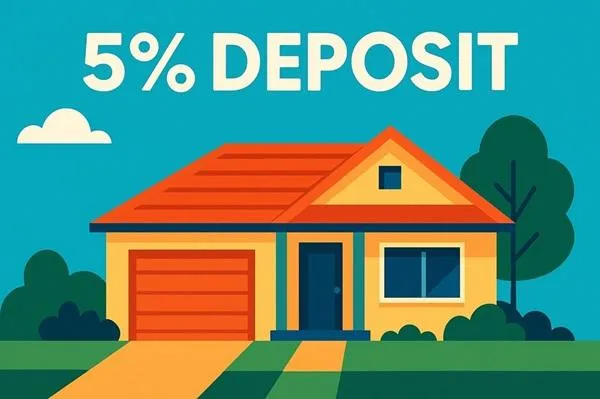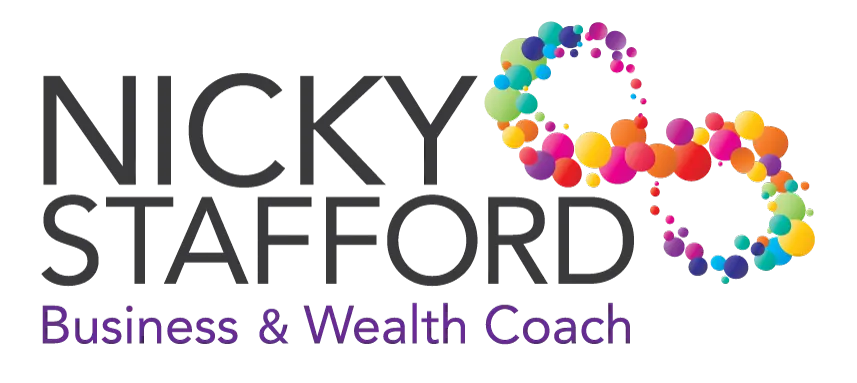ARTICLES
Home / Articles

The 5% Deposit Home Loan: A Wealth Trap or Strategic Masterstroke?
The chatter around government-backed 5% deposit schemes is electric, and for good reason. They're presented as a golden ticket for first-home buyers, slashing the time it takes to enter the property market and sidestepping the hefty cost of Lenders Mortgage Insurance (LMI)—a saving that can easily top $20,000.
For many, this is where the conversation stops. The door to homeownership is open, and they rush through it.
But as a wealth builder, you're not just trying to buy a house; you're building a financial future. The right question isn't simply, "Can I afford this?" but rather, "Is this the most strategic move for my capital?"
A low-deposit loan is one of the most powerful leverage tools available to the average person. But leverage is a double-edged sword. Before you decide, you need to look beyond the immediate excitement and analyse this decision through a wealth creation lens.
The On-Paper Cost: A Surface-Level Analysis
First, let's acknowledge the conventional wisdom. A smaller deposit means a larger loan, and the numbers don't lie. This creates two immediate financial drags:
1. Reduced Monthly Cash Flow: Your single greatest wealth-building tool is your income. A larger loan eats into it every single month.
Let's model this for a $700,000 property:
(Assuming a 5.5% interest rate over 30 years for comparison.)
That’s a $597 difference every month. Over a year, that's more than $7,100 of cash flow that could have been directed towards other investments, compounding your wealth. This drain on your primary wealth engine must be a key part of your calculation.
2. The Gross Interest Bill: The long-term impact is even more stark. More debt means more interest—a lot more.
Over 30 years, the leveraged buyer pays nearly $110,000 in extra interest. On paper, this looks like a catastrophic financial loss.
This is where most financial analysis stops. But this is where the wealth conversation begins.
The Wealth Creation Lens: Opportunity Cost and Leverage
The $110,000 in extra interest isn't the full story. The real strategic question is about opportunity cost.
In our example, the leveraged buyer (Scenario B) kept $105,000 ($140k - $35k) of their capital out of the property. The success or failure of their strategy hinges entirely on what they do with that retained capital.
What could that $105,000 do if it were working for you in other asset classes for the next 30 years?
Invested in a diversified portfolio: Compounding at an average of 7-8% per year, that $105,000 could grow into a sum that dwarfs the extra interest paid on the mortgage.
Used as a deposit for an investment property: It could be used to acquire another appreciating, income-producing asset, effectively doubling your footprint in the property market.
Fueling a business or self-development: It could be invested in a venture or education that dramatically increases your earning capacity, making the higher mortgage payment trivial.
This is the trade-off: The 5% deposit strategy means you accept higher interest costs and a cash flow squeeze in exchange for retaining a significant chunk of investment capital. If you use that capital effectively, the "extra" $110,000 in interest isn't a cost; it's the price you paid for an opportunity to generate far greater wealth.
It’s Not a Decision, It’s a Strategy
Viewing this as a simple "yes" or "no" choice is a mistake. The right path depends entirely on your financial discipline, goals, and philosophy.
The 20% Deposit Path is for:
The Consolidator. This individual prioritises security, lower repayments, and peace of mind. They are building wealth steadily by aggressively paying down debt and building equity in a single, core asset. Their strategy is about minimising risk and maximising stability.
The 5% Deposit Path is for:
The Accelerator. This individual understands leverage and is comfortable with calculated risk. They have the discipline to actively invest the capital they've retained and a strategy to grow their income to manage the higher cash flow demands. For them, a home is not just a place to live; it's one piece in a broader portfolio of assets.
Your Next Move
The 5% deposit scheme isn't a trap, but it's also not a free lunch. It's a powerful strategic tool that, in the right hands, can significantly accelerate your wealth journey. In the wrong hands, it can become a burden that stifles your financial growth for decades.
The difference lies in having a clear plan. Before you jump in, we need to move beyond the mortgage calculator and map out a comprehensive wealth strategy.
Let's discuss how this decision aligns with your long-term vision and build a plan that turns your property purchase into a cornerstone of your financial independence.
Get Inspired — Join Our Mailing List
Yes, You Can Live a Wealthy Life
You have a coach for your fitness, why not have one for your wealth?
Get started with a free, no-obligation chat.
General Advice Warning
All strategies and information provided on this website are general advice only which does not take into consideration any of your personal circumstances. Please arrange an appointment to seek referral to the correct professional for financial, legal, tax or credit advice before acting on any information contained in this website. Nicky Stafford operates in Infinite Wealth Partners Pty Ltd. ABN: 76 635 869 644 Nothing on this site constitutes specific financial advice
© Nicky Stafford Business & Wealth Coaching 2025.

